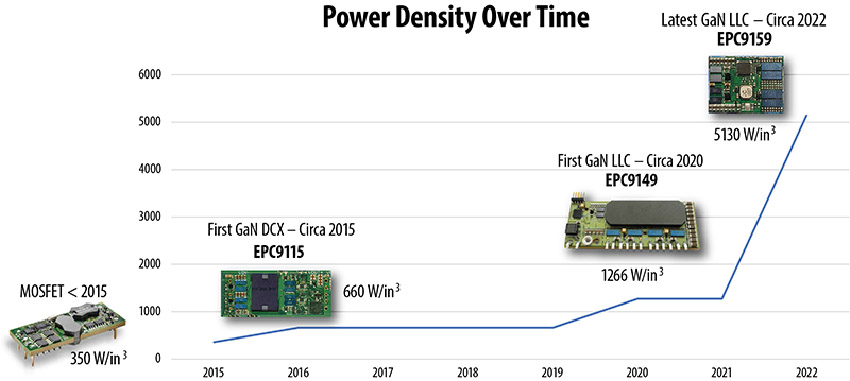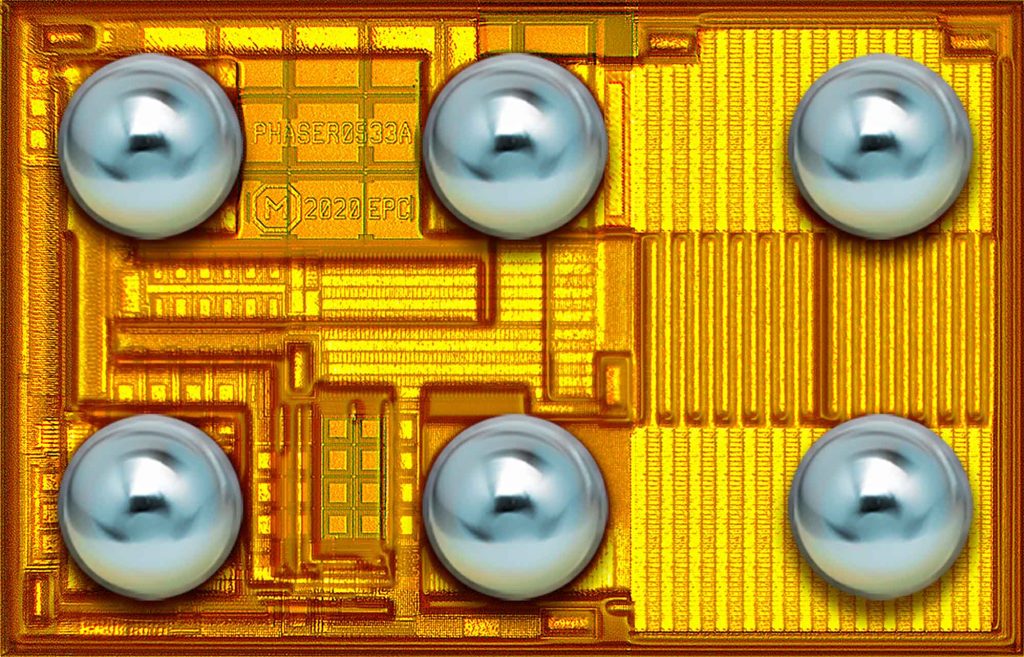Efficient Power Conversion (EPC) Corporation is the leader in gallium nitride (GaN)-based power management. EPC was founded in 2007 based on the belief that gallium nitride would be the inevitable successor to silicon beacue of it’s superior performance charateristics. EPC’s GaN devices increase power density, improve efficiency and enable new applications.
Interview with Renee Yawger, Marketing Director at Efficient Power Conversion.
Easy Engineerign: What are the main areas of activity of the company?
Renee Yawger: EPC’s mission is to make GaN power devices that are higher performance and lower cost compared to silicon. GaN is the preferred technology for progressive companies that are eager to remain at the forefront of their industries.
E.E: What’s the news about new products?
R.Y: As the GaN technology matures, the focus of new product development shifts to integration. Our first step forward in the integration of functions on a single chip came in September 2014, when EPC launched a family of monolithic half-bridge devices. In parallel, work started on adding drivers to power FETs on the same chip. The monolithic devices with drivers reduce the need for an external silicon-based IC driver, and eliminate gate loop inductance. The ultimate goal is to integrate all necessary functions for a complete power conversion solution on a single chip. In March of 2020, EPC released the first in a family of ePower™ stage devices with the EPC2152, which is a fully monolithic half bridge that integrates all the drive and level-shift functions, along with the bootstrap function.

E.E: What are the ranges of products?
R.Y: EPC has over 80 ICs and discrete transistors available for off-the-shelf delivery. Our products range from 15 V – 350 V. The initial products were discrete transistors but the product portfolio now includes a rapidly growing offering of integrated devices.
E.E: At what stage is the market where you are currently active?
R.Y: The initial adopters of GaN-based power transistors and integrated circuits were those applications taking advantage of the switching speed, such as lidar and RF envelope tracking. These were the early adopters. As production volumes increased and costs reduced, more traditional applications such as 48 V DC-DC conversion for data centers and computing, drones, robots, satellites, consumer products and high-volume automotive applications have adopted GaN solutions. These last few are the most conservative customers for a relatively new technology like GaN.

E.E: What can you tell us about market trends?
R.Y: Data Center Servers: The growth of the cloud is forcing a corresponding growth in data centers and demand for higher power density converters, leading to the adoption of 48 V input systems as oppossed to the traditional 12 V power distribution network. Several power supply manufacturers have adopted the unregulated, non-isolated LLC topology using GaN transistors for these applications for state-of-the-art performance in terms of efficiency and power density. An example is the MPS 300 W LLC converter with a power density of 1700 W/in3
Autonomous Vehicles and 3D Sensing: Lidar (light detection and ranging) is the technology that provides the “eyes” for autonomous vehicles. The faster the laser beam in the lidar system can be transmitted, the higher the resolution of the system for enhanced safety. At the core of the lidar system is where GaN plays a vital role – it enables the laser signal to be fired at higher speeds than a comparable silicon component enabling higher resolution and faster response times. Lidar technology is rapidly expanding beyond autonomous vehicles to phones, robots, drones, vacuum cleaners, and security surveillance systems making this a very large market for GaN technology.
Motor Drives: Brushless DC (BLDC) motors are finding increasing applications in robotics, eMobility, and drones. GaN devices reduce size, weight, cost, audible and electric noise, and can eliminate the need for electrolytic capacitors for additional savings and increased reliability.
Space: GaN’s natural properties make it relatively immune to the effects of radiation. This natural immunity and the significant performance advantages compared to Rad Hard silicon MOSFETs make space an inevitable area for many applications including satellite DC-DC converters, reaction wheel motor drives, and ion thrusters.

E.E: What are the most innovative products marketed?
R.Y: While GaN already offers significantly higher performance than silicon, GaN is still several orders of magnitude away from its theoretical performance limits. We expect to see improvements in the basic figure of merit of the device technology and a rapid migration to more complex integrate devices over the next few years. We currently have a growing family of ePower™ stage ICs for high power density computing and motor drive application as well as an expanding family of eToF™ ICs for time-of-flight(ToF)/lidar applications.
E.E: What estimations do you have for 2022?
R.Y: SWe have seen the adoption rate for our GaN devices accelerate dramatically in the last few years. The largest growth market in the last few years has been in 48 V DC-DC power supplies for high-density computing applications for cloud computing, artificial intelligence, machine learning, and gaming. In these applications GaN offers significant improvements in switching performance, size reduction, and power density. Looking ahead we expect the largest market drivers to include automotive 48 V systems as the electrification of vehicles is mandated and accelerated, lidar as those systems become simple and inexpensive enough to be incorporated into high-volume consumer products such as cell phones and tablets, motor drives for the rapidly expanding eMobility market, and solar optimizers. Overall, the market for GaN should approximately double in 2022.

